Featured Articles
View All >>>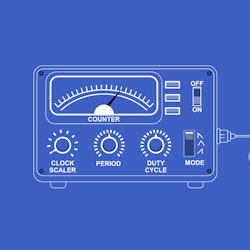
How to generate PWM signal using Microchip 8-bit AVR microcontrollers
NOTE: This article explains how to generate PWM signals with newer Microchip 8-bit AVR microcontrollers released after 2016. These include microcontrollers from the tinyAVR 0/1/2-series or megaAVR 0-series. Before diving in, it’s assumed that you already understand what PWM (Pulse Width Modul...
Continue Readeing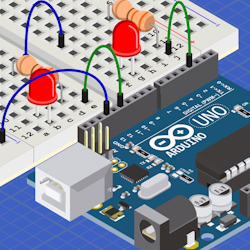
How to generate PWM signal with Arduino board
In this article, we discussed what a PWM (Pulse Width Modulation) signal is and how to generate it using Raspberry Pi. In this article, we’ll talk about how to generate PWM signals on the Arduino Uno board. We’ll start with a simple example of generating a PWM signal using software and proceed...
Continue Readeing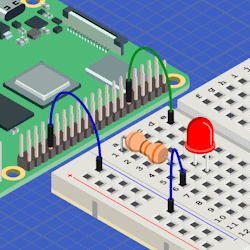
How to generate PWM signals on Raspberry Pi?
Pulse Width Modulation (PWM) is a technique that involves modifying the width of a pulse while keeping the frequency constant. By adjusting the width of the pulse, we can regulate the power delivered to a load. PWM finds application in various scenarios, including controlling the speed of a DC motor...
Continue Readeing
How to use GPIO pins on new generation of AVR Microcontrollers
This article will guide you on using GPIO pins for input and output on the latest AVR microcontrollers. Although the examples provided are for the ATtiny 202 microcontroller, you can easily adapt them for other models with minor modifications. We’ll begin with a straightforward example of how to mak...
Continue Readeing
How to use Arduino's Digial IO pins
The Arduino board allows users to connect and interact with a variety of external devices. One of the key features of the Arduino board is the ability to set any digital pin as either an input or an output, depending on the user’s needs. By configuring a pin as an input, the user can read sign...
Continue Readeing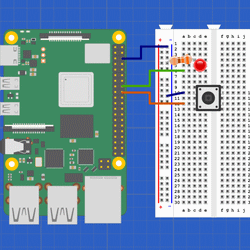
How to use Raspberry Pi GPIO Pins as Input/Output
GPIO or General Purpose Input Output is a crucial feature of Raspberry Pi that enables users to connect and interact with external devices. While the Raspberry Pi’s GPIO pins support different interfaces such as I2C, UART, and SPI, this article will focus on how to use a generic GPIO pin as either a...
Continue Readeing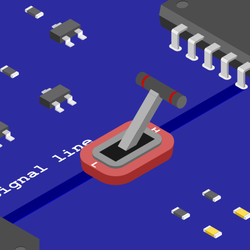
How does the Bi-Directional Logic Level Shifter work?
The PiSwitcher Plus board communicates with the Raspberry Pi board through the I2C interface. A small problem arises since the board operates at 5V, but the Raspberry Pi GPIO pins operate at 3.3V. Since the communication is bi-directional, and connecting the lines directly won’t produce reliable res...
Continue Readeing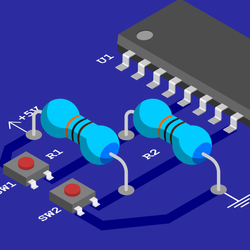
How pull-up/pull-down resistors work?
We know that a logical signal can have two states: LOW (or 0) and HIGH (or 1). In the LOW state, the voltage level is usually close to 0V. In the HIGH state, the voltage is close to the power source voltage: 3.3V, 5V, or in some circuits even lower. When we don’t provide an input signal to an input ...
Continue Readeing
How to use MOSFET transistors as switch
This article is a quick reference on how to use MOSFET transistors as a switch. Please refer to this article if you want to know how to use a BJT transistor as a switch. There are two main types of transistors: Bipolar Junction Transistors (BJT) and Field Effect Transistors (FET). The FET transistor...
Continue ReadeingFeatured Projects
View All >>>
RC Transmitter and Receiver for Models from scratch
While there are ready-made options available for remote-controlled models, I chose to create my own from scratch because I enjoy understanding how things work and exploring different possibilities. The goal is to have a design that can be easily changed by adding or removing features, depending on h...
Continue Readeing
Stepper Motor Controller (Prototype)
NOTE: Please be aware that the Stepper Motor Controller board is currently in the prototype phase, and we are actively testing and refining its design. The final version of the board may differ from the prototype version. The content provided here represents the initial experimental version of the ...
Continue Readeing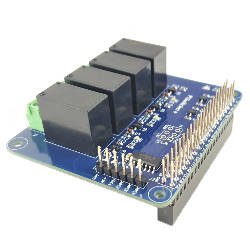
Pi Switcher Plus
Overview A while ago, we had a project that required switching high voltage based on an input signal. There are plenty of expansion board models for Raspberry Pi with relays that allow you to switch high voltage/current. They are very simple, but none of them have an ADC module. These boards requir...
Continue Readeing
